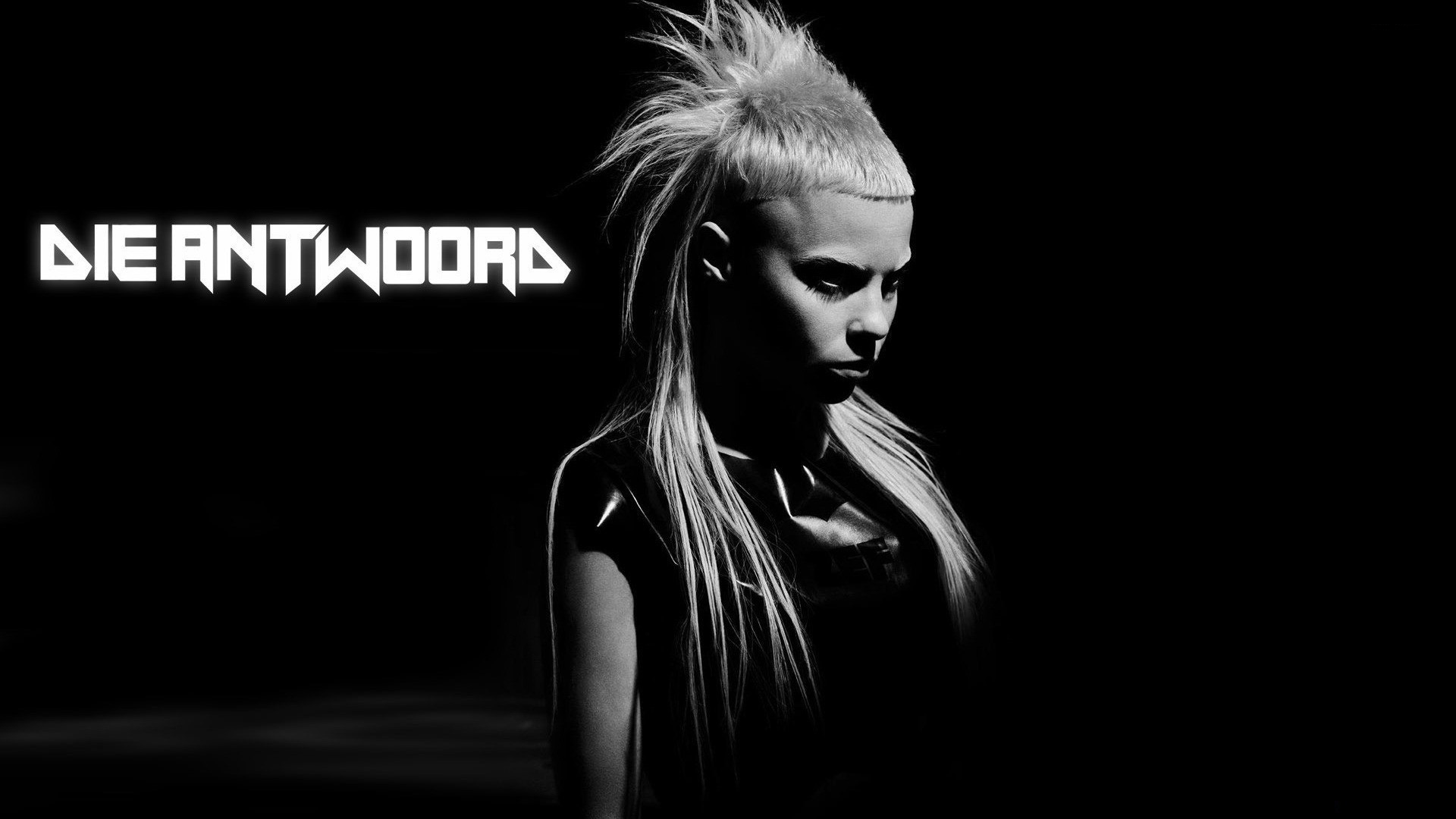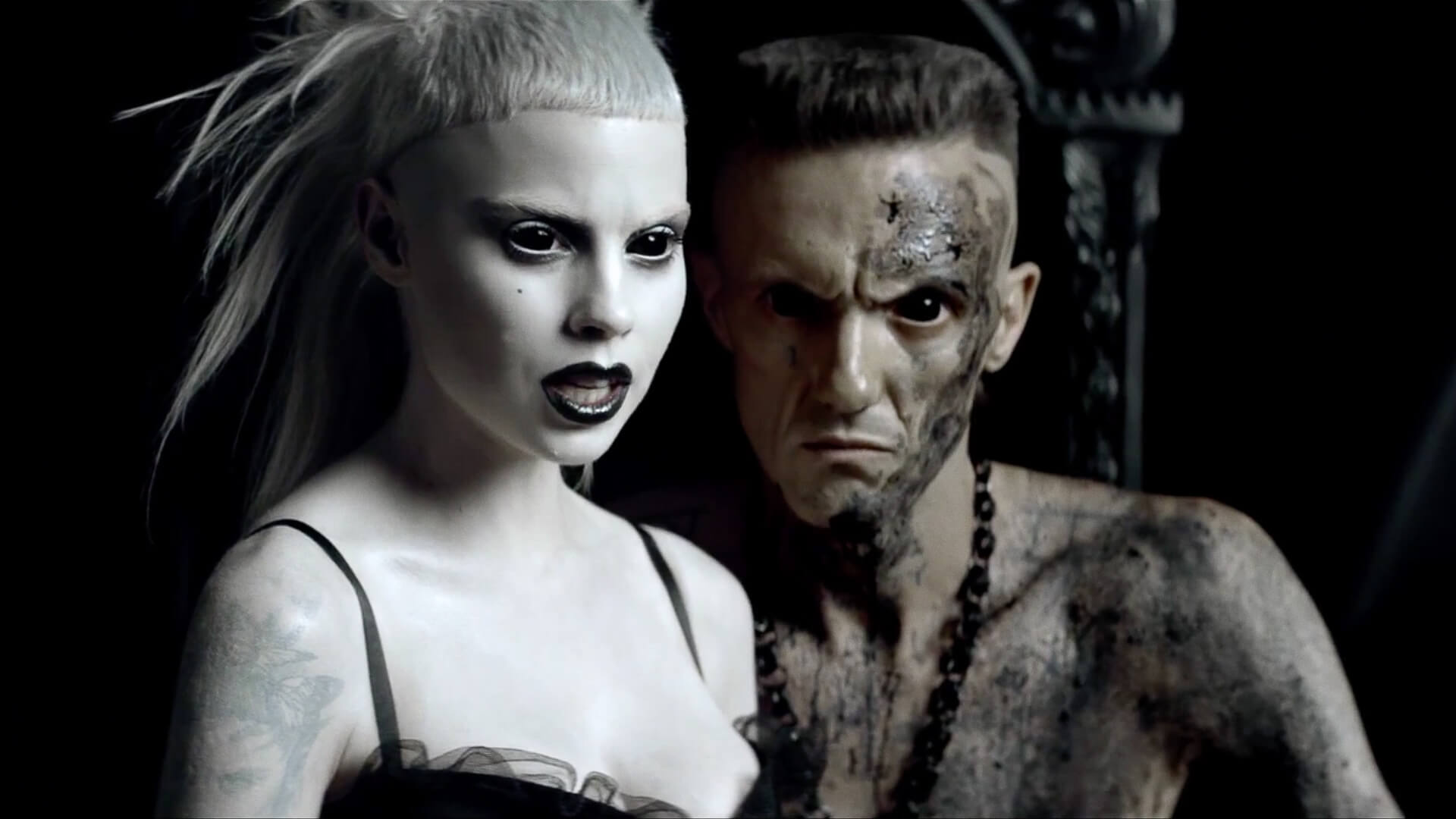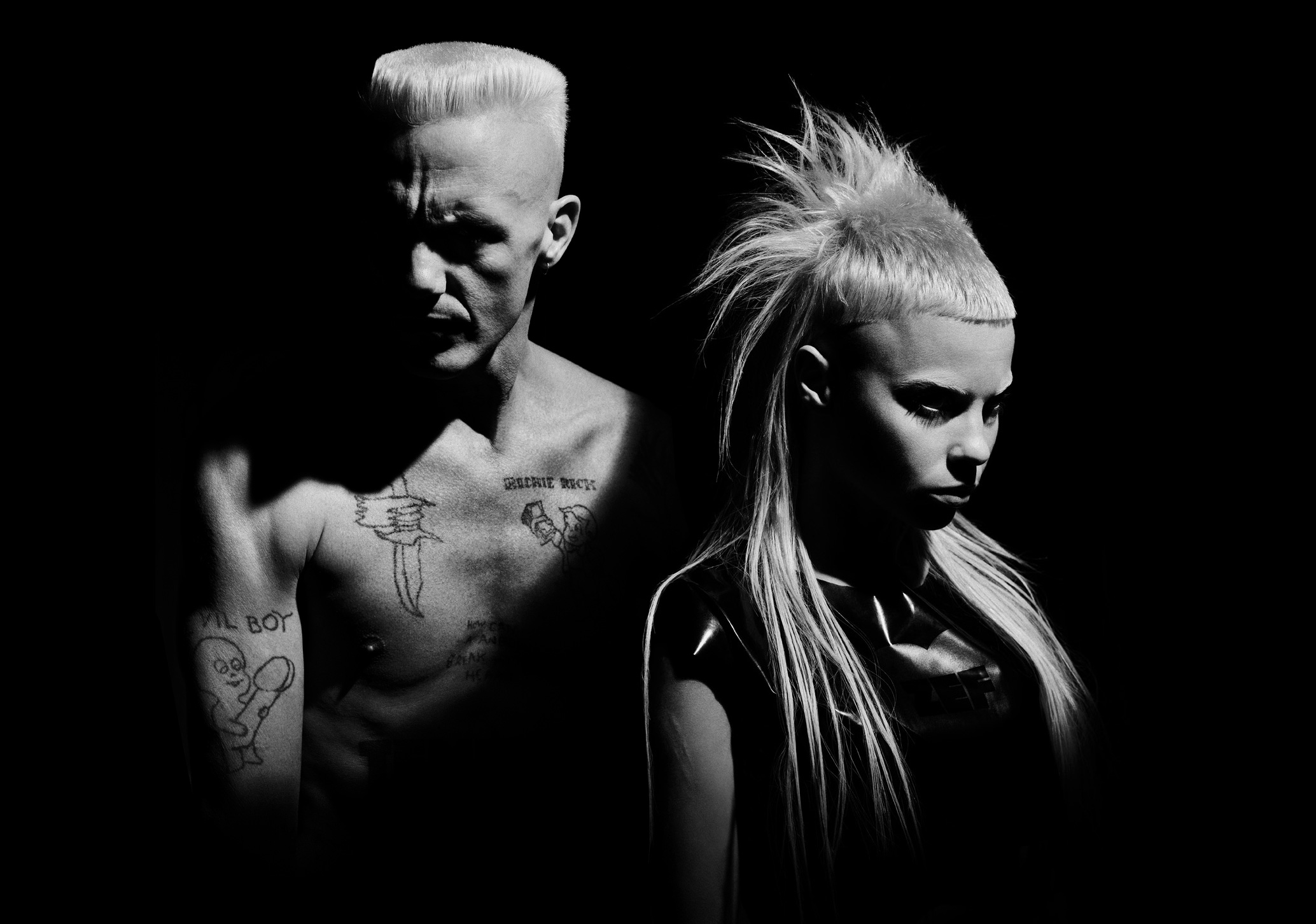Unpacking The Core Members Of Die Antwoord: Who Brings The Zef To Life?
Have you ever found yourself completely captivated by the raw, unfiltered energy of Die Antwoord, wondering just who is behind that truly unique sound and vision? It’s a pretty common thought, actually. This South African group burst onto the global music scene with a style so distinct, so unapologetically different, that they immediately grabbed everyone's attention. Their music, their videos, and their whole vibe are, in a way, like nothing else out there, sparking a lot of curiosity about the people who make it all happen. You might be curious about the creative forces driving their "zef" aesthetic, which is, you know, a sort of counter-culture movement from South Africa.
The group, which gained immense popularity for its blend of rave, hip-hop, and electronica, has always been a bit of a mystery, especially when it comes to the individuals who comprise its heart. Many fans, and even casual listeners, often ask about the specific members of Die Antwoord, wanting to understand the personalities that craft such an original artistic expression. We're talking about the folks who bring their wild ideas to life, shaping the sounds and images that stick with you.
Today, as of May 23, 2024, the core creative forces remain very much at the center of everything Die Antwoord does. We're going to take a closer look at these influential figures, exploring their individual backgrounds and how their combined talents form the unmistakable identity of this rather groundbreaking group. So, if you've ever wanted to get a clearer picture of who's who in Die Antwoord, you're definitely in the right place.
Table of Contents
- The Core Duo: Ninja and Yolandi Visser
- The Musical Backbone: DJ Hi-Tek
- Evolution of the Group's Lineup
- The "Zef" Philosophy and Identity
- Impact and Influence
- Frequently Asked Questions About Die Antwoord Members
- Conclusion
The Core Duo: Ninja and Yolandi Visser
When you think about the members of Die Antwoord, two names pretty much instantly come to mind: Ninja and Yolandi Visser. These two are, arguably, the face and voice of the whole operation. They're the main performers, the lyricists, and the conceptual architects behind the group's rather striking image and sound. Their on-stage personas are, you know, larger than life, but there's a lot more to them than just the characters they portray. They've built something truly unique together, and it's fascinating to see how they've managed to keep that going.
Biography: Ninja (Watkin Tudor Jones)
Ninja, whose actual name is Watkin Tudor Jones, has a really long and varied history in the South African music scene even before Die Antwoord came along. He's, like, more or less a veteran. Born on September 26, 1974, in Johannesburg, South Africa, Jones spent years experimenting with different musical projects and identities. For instance, he was involved with groups like The Original Evergreen, MaxNormal.TV, and The Constructus Corporation. Each of these earlier endeavors explored different facets of his artistic expression, from hip-hop to performance art. He's always been someone who pushes boundaries, and you can see that thread running through all his work. These past projects, in a way, helped him refine his unique approach to music and performance, setting the stage for what would become Die Antwoord.
His persona as Ninja is a very deliberate creation, embodying the "zef" counter-culture aesthetic with its blend of high and low art, often with a shocking or provocative edge. He's known for his rapid-fire rapping style, his intense stage presence, and his distinctive visual choices, including his many tattoos. He's, you know, often the one delivering the more aggressive or confrontational parts of their songs. His artistic journey shows a consistent drive to explore identity and societal norms through his work, which is, honestly, pretty compelling.
| Detail | Information |
|---|---|
| Full Name | Watkin Tudor Jones |
| Stage Name | Ninja |
| Date of Birth | September 26, 1974 |
| Place of Birth | Johannesburg, South Africa |
| Role in Die Antwoord | Lead Male Vocalist, Rapper, Lyricist, Performer |
| Associated Acts | The Original Evergreen, MaxNormal.TV, The Constructus Corporation |
Biography: Yolandi Visser (Anri du Toit)
Yolandi Visser, born Anri du Toit on December 1, 1985, in Port Alfred, South Africa, is the other half of Die Antwoord's striking visual and auditory identity. Her journey into music also began before Die Antwoord, with her participation in some of Watkin Tudor Jones's earlier projects, like MaxNormal.TV. She's, like, a really important part of the whole picture. Yolandi's distinctive high-pitched voice, often described as childlike or pixie-like, contrasts sharply with Ninja's deeper, more aggressive delivery, creating a very dynamic vocal interplay. This contrast is, you know, a signature element of their sound.
Her visual persona is just as iconic as her voice. Yolandi often sports a unique, somewhat futuristic and edgy look, with her signature bleached blonde mullet and often minimal, yet striking, clothing choices. She embodies the female aspect of the "zef" aesthetic, challenging traditional notions of beauty and femininity. Her performances are, you know, very expressive, full of raw energy and a kind of fierce vulnerability. She's, apparently, very involved in the creative direction of their music videos and overall artistic presentation, which helps explain the group's consistent visual language.
| Detail | Information |
|---|---|
| Full Name | Anri du Toit |
| Stage Name | Yolandi Visser |
| Date of Birth | December 1, 1985 |
| Place of Birth | Port Alfred, South Africa |
| Role in Die Antwoord | Lead Female Vocalist, Rapper, Performer |
| Associated Acts | MaxNormal.TV |
Their Creative Partnership and Dynamic
The artistic relationship between Ninja and Yolandi Visser is, in a way, the very heart of Die Antwoord. They've been collaborating for many years, developing a creative synergy that allows them to push boundaries and explore controversial themes. Their dynamic is often described as a blend of artistic partnership and a kind of unconventional family unit, given their shared personal history. This connection, you know, seems to fuel their intense and often provocative artistic output. They challenge each other, and it shows in the work they produce.
They are both, in some respects, deeply involved in every aspect of the group's creative process, from writing lyrics and conceptualizing music videos to designing their distinctive costumes and stage sets. Their shared vision for the "zef" movement and its expression through their art is, apparently, what keeps their creative engine running. It's not just about the music; it's about building an entire world around it. This comprehensive approach is, frankly, what makes Die Antwoord stand out from many other musical acts.
The Musical Backbone: DJ Hi-Tek
Beyond Ninja and Yolandi, the third significant, albeit mysterious, member of Die Antwoord is DJ Hi-Tek. This individual is credited as the group's primary producer and often appears in their music videos and live performances, usually wearing a mask or obscured in some way. The identity of DJ Hi-Tek has, in a way, been kept largely under wraps, adding to the group's enigmatic appeal. It's, you know, part of the whole mystique they've built.
DJ Hi-Tek is responsible for crafting Die Antwoord's signature electronic sound, blending elements of rave, techno, and hip-hop with uniquely South African influences. The beats are, like, very distinct and often quite aggressive, providing the perfect backdrop for Ninja and Yolandi's vocals. While the actual person behind the mask has varied over time, with different individuals sometimes filling the role for live shows, the concept of DJ Hi-Tek as the sonic architect remains a consistent and crucial element of the group's identity. It's a bit of a fascinating puzzle, honestly.
Evolution of the Group's Lineup
Since their emergence around 2008, the core lineup of Die Antwoord has, more or less, remained consistent: Ninja, Yolandi Visser, and the enigmatic DJ Hi-Tek. However, like many musical groups, their presentation and the individuals supporting them in live performances have, you know, seen some shifts over the years. Early on, their videos often featured a broader cast of characters, contributing to the rich, often bizarre, world they created.
While the main creative forces have stayed put, the evolution of their live show has sometimes included different DJs or performers taking on the role of DJ Hi-Tek, particularly for touring purposes. This doesn't change the fundamental creative partnership of Ninja and Yolandi, but it does mean the specific person behind the decks might vary. The group's journey has also seen them adapt their sound and visual style, yet they've always maintained that unmistakable "zef" flavor. They've, you know, managed to keep things fresh while staying true to their roots.
The "Zef" Philosophy and Identity
Understanding the members of Die Antwoord really means understanding "zef." This term, originating in South Africa, refers to a counter-culture movement that embraces a kind of working-class, often perceived as "tacky" or "common," aesthetic, but with a proud and defiant twist. It's about taking something that might be seen as low-brow and elevating it, or just, you know, owning it completely. Ninja and Yolandi have, arguably, become the global ambassadors for this philosophy.
They embody "zef" through their fashion, their lyrical content, and their visual art. Their music videos are, like, practically manifestos of this style, blending stark realism with surreal, often shocking, imagery. It’s a very visual movement, and they use every part of their presentation to convey it. This commitment to their identity is, in a way, what gives them their authenticity and their edge. They are, quite simply, living their art, and that really resonates with people who are looking for something different. You can, for instance, see how their whole approach is designed to challenge expectations.
Impact and Influence
Die Antwoord's unique blend of music, performance art, and cultural commentary has, you know, made a significant impact on the global stage. They've managed to carve out a niche that defies easy categorization, influencing a wide array of artists and inspiring fans worldwide. Their bold, in-your-face style has, basically, opened doors for other unconventional acts to gain recognition. They showed that you don't have to fit neatly into a box to succeed.
Despite occasional controversies and periods of less public activity, the core members of Die Antwoord have maintained a loyal following and continue to produce work that challenges and provokes. Their commitment to their artistic vision, even when it’s met with criticism, is, like, pretty admirable. They've shown that artistic integrity can, in some respects, be maintained even in the face of widespread scrutiny. For instance, their music has been featured in films and commercials, showing their reach beyond just the music industry. You can learn more about their journey and cultural impact through various music publications and interviews, for example, on sites like Pitchfork.
Frequently Asked Questions About Die Antwoord Members
Are Die Antwoord still together as a group?
Yes, as of today, May 23, 2024, Die Antwoord is still active. While they have had periods of lower public visibility, Ninja and Yolandi Visser continue to release music and perform. They, you know, tend to operate on their own schedule, but they haven't officially disbanded. Their creative partnership is, apparently, still very much intact.
Who is the third member of Die Antwoord, DJ Hi-Tek?
DJ Hi-Tek is the group's producer and a masked performer who appears in their videos and live shows. The identity of the person behind the DJ Hi-Tek persona has been kept largely mysterious, and it's, like, believed that different individuals might sometimes fill the role for live performances, while the core production is handled by the primary, unrevealed creative force. It's, in a way, part of the whole theatrical aspect of the group.
What is "Zef" in relation to Die Antwoord?
"Zef" is a South African counter-culture movement that Die Antwoord's members, you know, fully embrace and embody. It's a term that generally refers to a working-class aesthetic that's often seen as a bit common or even trashy, but it's reclaimed with pride and a sense of unique style. Die Antwoord uses "zef" as a central theme in their music, fashion, and visual art, making it a globally recognized concept. It's, basically, their artistic foundation.
Conclusion
The enduring appeal of Die Antwoord comes, in large part, from the distinct and powerful presence of its core members: Ninja, Yolandi Visser, and the enigmatic DJ Hi-Tek. These individuals have, you know, forged a creative path that is truly their own, bringing the "zef" philosophy to a global audience. Their unique blend of music, visual art, and performance continues to challenge expectations and captivate listeners. You can learn more about their artistic journey on our site, and we invite you to explore more of their compelling work on this page .

Die Antwoord Wallpaper

Die-Antwoord – Ska Places

Artist: Die Antwoord | Telekom Electronic Beats